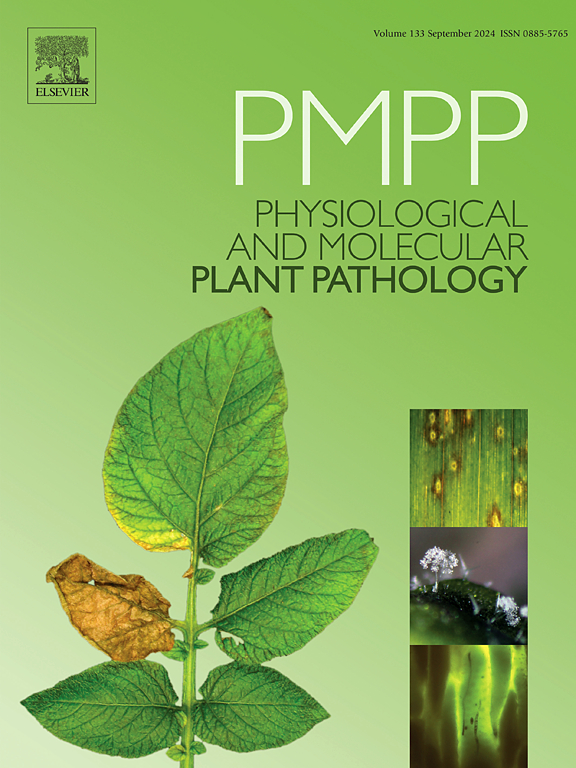从传统的角豆(Ceratonia silqua L.)生产系统向集约化的转变:探索主要的植物检疫问题和新的挑战
IF 2.8
3区 农林科学
Q2 PLANT SCIENCES
引用次数: 0
摘要
角豆树(Ceratonia siliqua L.)在地中海盆地具有重要的生态和经济价值。传统上在低投入、混合农业生态系统中种植的角豆果园保持着高度的遗传多样性和生态可塑性。角豆豆以其弹性和最低投入需求而闻名,历史上主要作为牲畜饲料种植。面对日益增加的环境压力和不断增长的全球需求,了解角豆树的生态作用可以帮助开发有弹性的农业方法,恢复生态系统,并确保其种植的长期可持续性,尽管遗传多样性减少,气候变化和病虫害压力增加。集约化做法——如单一作物、高密度种植和过度灌溉——破坏了自然抑制病虫害和病原体压力的生态平衡。这些做法创造了同质的环境,有利于病原体的传播和害虫的扩散,挑战了树木的自然恢复能力。本文综述了对角豆豆系统的主要真菌、细菌和昆虫威胁,并研究了它们的生物学和流行病学。它还预测了从传统生产系统向集约化生产系统的转变如何增加了作物对病虫害的易感性。我们强调需要采取综合管理办法,将可持续做法与农业技术结合起来,以保持角豆的生产力和健康。潜在的策略,如选择抗性品种、果园品种多样化、优化栽培方法和使用生物防治,可以为向集约化栽培过渡所带来的挑战提供有希望的解决方案。我们的前瞻性分析强调了将农业生态原则与现代农业实践相结合的迫切需要,以确保角豆豆种植在快速发展的农业背景下的长期可持续性。本文章由计算机程序翻译,如有差异,请以英文原文为准。
Shifting from traditional to intensive carob (Ceratonia siliqua L.) production systems: Exploring major phytosanitary issues and emerging challenges
The carob tree (Ceratonia siliqua L.) holds significant ecological and economic value in the Mediterranean basin. Traditionally cultivated in low-input, mixed agroecosystems, carob orchards maintain high genetic diversity and ecological plasticity. Known for its resilience and minimal input requirements, carob has historically been grown mainly as livestock feed. In the face of increasing environmental stresses and rising global demand, understanding the carob tree's ecological role can help develop resilient agricultural methods, restore ecosystems, and ensure the long-term sustainability of its cultivation despite reduced genetic diversity, climate change and increasing pest and disease pressures.
Intensive practices—such as monocropping, high-density planting, and excessive irrigation—disrupt the ecological equilibrium, that naturally suppressed pest and pathogen pressure. These practices create homogeneous environments conducive to the spread of pathogens and pest proliferation, challenging the tree's natural resilience.
This review highlights major fungal, bacterial, and insect threats to carob systems, examining their biology and epidemiology. It also projects how the transition from traditional to intensive production systems increases the crop's susceptibility to pests and diseases.
We emphasize the need for integrated management approaches combining sustainable practices with agricultural technology to maintain carob productivity and health. Potential strategies—such as selecting resistant cultivars, diversifying orchard varieties, optimizing cultural practices, and using biological control—could offer promising solutions to the challenges associated with the transition toward intensified cultivation. Our prospective analysis underscores the critical need of integrating agroecological principles with modern agricultural practices to ensure long-term sustainability of carob cultivation in a rapidly evolving agricultural context.
求助全文
通过发布文献求助,成功后即可免费获取论文全文。
去求助
来源期刊
CiteScore
4.30
自引率
7.40%
发文量
130
审稿时长
38 days
期刊介绍:
Physiological and Molecular Plant Pathology provides an International forum for original research papers, reviews, and commentaries on all aspects of the molecular biology, biochemistry, physiology, histology and cytology, genetics and evolution of plant-microbe interactions.
Papers on all kinds of infective pathogen, including viruses, prokaryotes, fungi, and nematodes, as well as mutualistic organisms such as Rhizobium and mycorrhyzal fungi, are acceptable as long as they have a bearing on the interaction between pathogen and plant.

 求助内容:
求助内容: 应助结果提醒方式:
应助结果提醒方式:


